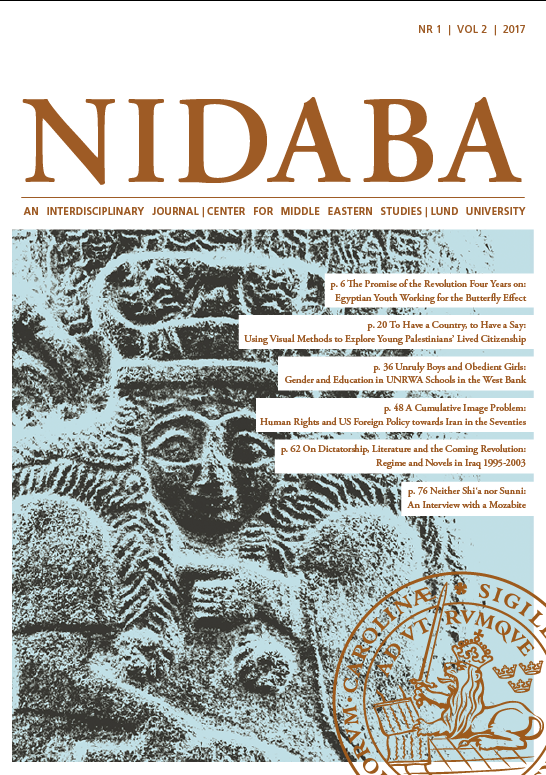Abstract
This article explores the experience of being young, Egyptian, supportive of the 2011 revolution, and active in civil society in the post-revolutionary period in Cairo and Alexandria, looking into aspects of continuity and change that shape this experience. It draws on ve life histories and aims to understand the reasons behind youth’s engagement in the revolution beyond the framework of youth economic exclusion. e data was approached using a mixed theoretical framework, which encompasses youth- fulness (Bayat) and a heuristic, as opposed to analytic, use of social generations (Mannheim). e participants were invariably guided by a concern with everyday politics in their engagement with the revolution and the civil society. eir expectations of the revolution and visions of positive change are, however, very diverse. Socioeconomic exclusion does not appear as a driving force for their engagement in the revolution, showing it is not the universal fate of Egyptian youth but one shaped by class and physical location. In terms of continuity and change, the experience of being young and active in civil society in Egypt continues to be shaped by class, while a major change happened when the military took over the country in July 2013, spurring the critical participants to re-examine and sometimes tone down their engagement, experiencing a strong sense of exclusion. Another change that dates pre-rev- olution is the youth’s increased socio-political capital through aptitude in horizontal organizing, use of new technologies for activism, political reasoning beyond traditional ideological or societal divides, and propensity to criticize and speak back to power. e impacts of this change were still felt at the time of the interviews.Authors retain copyright and grant the journal right of first publication with the work simultaneously licensed under a Creative Commons Attribution License that allows others to share the work with an acknowledgement of the work's authorship and initial publication in this journal.
Authors are able to enter into separate, additional contractual arrangements for the non-exclusive distribution of the journal's published version of the work (e.g., post it to an institutional repository or publish it in a book), with an acknowledgement of its initial publication in this journal.
Authors are permitted and encouraged to post their work online (e.g., in institutional repositories or on their website) prior to and during the submission process, as it can lead to productive exchanges, as well as earlier and greater citation of published work (See The Effect of Open Access).
The journal provides open access to all accepted manuscripts in hopes of facilitating an exchange of knowldge and informed discussion about the Middle East. Publishing with Nidaba, authors agree to the terms of the Creative Commons Attribution-NonCommercial-NoDerivatives 4.0 International License, which allows others to share the work with an acknowledgement of the work's authorship and initial publication in this journal. Authors retain the copyright to their manuscript and grant the journal the right of first publication.
The content of this journal is licensed under a Creative Commons Attribution-NonCommercial-NoDerivatives 4.0 International License.

